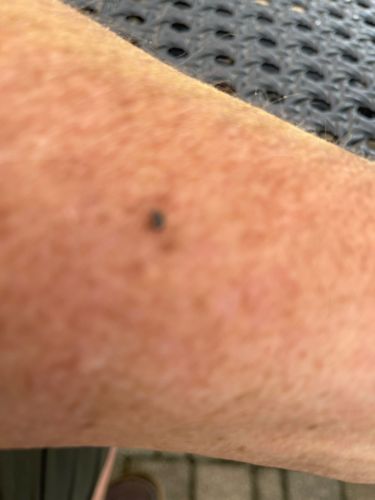Tick (likely a deer tick or blacklegged tick based on appearance and common occurrence on human skin)
Scientific Name: Likely Ixodes scapularis (for Deer Tick/Blacklegged Tick), but definitive identification requires microscopic examination.
Order & Family: Order: Ixodida (Ticks), Family: Ixodidae (Hard ticks)
Size: Unfed larvae: < 1 mm; Unfed nymphs: ~1-2 mm; Unfed adults: ~2-5 mm. Engorged ticks can swell significantly, up to 10-15 mm.

Natural Habitat
Wooded areas, tall grasses, brush, leaf litter, and other vegetation where hosts are likely to pass by. Common in suburban and rural environments with wildlife.
Diet & Feeding
Blood of mammals, birds, and sometimes reptiles and amphibians. They are obligate hematophagous parasites.
Behavior Patterns
Hard ticks typically go through four life stages: egg, larva, nymph, and adult. Each active stage (larva, nymph, adult) requires a blood meal to molt to the next stage or for reproduction (adult females). They quest for hosts by waiting on vegetation with their front legs outstretched. They attach to a host and feed for several days to a week or more.
Risks & Benefits
Potential risks: Ticks are significant vectors of various pathogens, including bacteria (e.g., Lyme disease, anaplasmosis, ehrlichiosis), viruses (e.g., Powassan virus), and protozoa. Their bites can cause localized irritation, swelling, and allergic reactions. Potential benefits: While primarily known for disease transmission, ticks play a small role in the food chain for some predators. However, their ecological benefits are generally outweighed by their roles as disease vectors.
Identified on: 8/12/2025